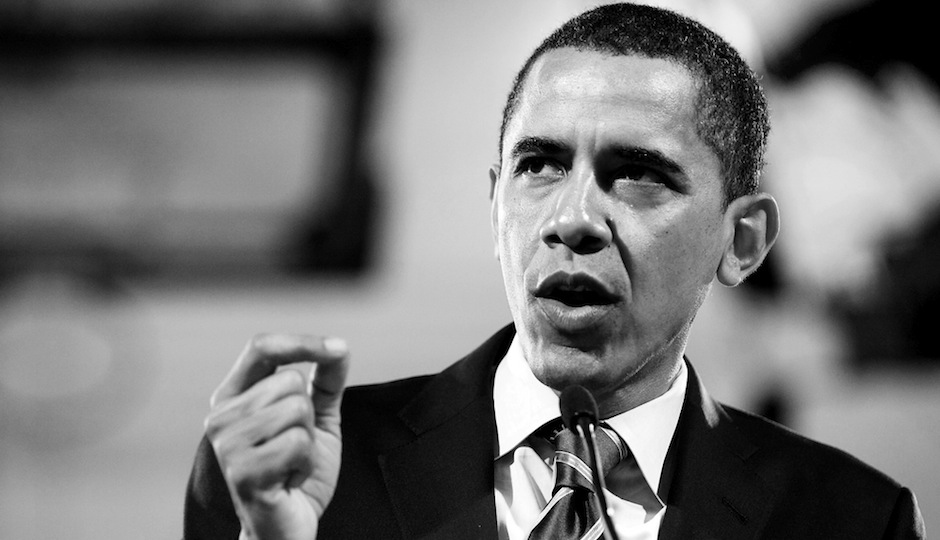Five Ways Obama’s “My Brother’s Keeper” Could Help Philly
The collaborative program is designed to bridge achievement gaps for at-risk communities.

Photograph by Jeff Fusco
By now, you’ve probably heard about President Obama’s new “My Brother’s Keeper” initiative. The collaboration between foundations, policy makers, and private businesses wants to better understand the obstacles facing black and Latino boys and young men and then eliminate barriers to success.
The initiative’s Task Force is a made up of executive departments and federal agencies that will examine policies and programs across the nation that best serve black and Latino males. The Task Force will also recommend “incentives for adoption of policy by state, local, and private decision makers in order to improve outcomes for boys and young men of color.”
But perhaps you’re wondering why this this needed. According to a statement released by the White House, “As recently as 2013, only 14 percent of black boys and 18 percent of Hispanic boys scored proficient or above on the 4th grade reading component of the National Assessment of Educational Progress compared to 42 percent of white boys and 21 percent of black and Hispanic girls. Youth who cannot read ‘proficiently, by third grade are four times less likely to graduate high school by 19.”
“While black youth account for 16 percent of the youth population,” the statement continues, “they represent 28 percent of juvenile arrests, and 37 percent of the detained population. While just over 6 percent of the overall population, black males of all ages accounted for 43 percent of murder victims in 2011.”
Those are some serious gaps with even more serious ramifications for the black community and beyond. In various cities throughout the country, similar bodies have been formed to close these achievement gaps. In Philadelphia, the Mayor’s Commission on African American Males (MCAAM) was originally formed by former Mayor Wilson Goode as “ a positive step toward improving the situation of African American males” who “ face myriad challenges to their viable and stable presence in families, communities and our city overall.”
MCAAM, too, is cross-disciplinary; its members represent various sectors including government, business, education, labor, health, and civic organizations. MCAAM focuses on improving conditions “affecting the cultural, social, economic, political, education, health and general well-being of African American males residing in Philadelphia. The group notes hosting community listening sessions and the adoption of a “Birth to Opportunity” pipeline among its successes.
As My Brother’s Keeper grows, its homepage on the Department of Education website will include a list of best practices as a resource for those who serve or work with black and Latino boys and young men. Here’s how, with all of the data they’ll be fielding, to make sure Philadelphia’s population can be best served:
1. Connect with MCAAM
MCAAM is a body that knows the Philadelphia landscape first-hand, and can understand that particular nuances and challenges of this area. MCAAM, already focused on improving the lives of African American men in Philadelphia, can be a localized version of the My Brother’s Keeper task force, and a sounding board national best practices in the city.
2. Don’t Ignore the Role of Education
A broken school district will produce a population of broken adults. Though it’s a federal initiative, My Brother’s Keeper must recognize that many achievement gaps start with access to quality education at the local level. It’s no secret that Philadelphia schools are in trouble; there is no getting around access to quality education as a primary best practice for the success of all kids and teens.
3. Incentivize Local Businesses
My Brother’s Keeper wants to engage the public and private sectors on black male achievement. To ensure that this happens, local businesses such as Comcast, big pharma, and others have to be incentivized to keep up their end of the bargain. As we’ve seen even in with the development of MCAAM, even well-intentioned ideas get forgotten, and so, too, do the people and interests those ideas were designed to serve.
4. Move Beyond the Statistics
Numbers provide a great indicator of a landscape but they don’t tell the story of people or their lives. In order to truly be a success, My Brother’s Keeper should make sure they understand very specifically not only what black and Latino boys and men need, and also what they want. Presumption or insistence makes for a nasty case of paternalism, which does not empower and destroys self-motivation and self-sufficiency.
5. Generate Buy-In Outside of the Black and Latino Communities
Special-interest programs can alienate those who are not included among those they are designed to serve. In addition to serving black and Latino male youth, My Brother’s Keeper needs to make the case about why black and Latino male achievement benefits the community at large, whether in Philadelphia or nationwide. If the reason for others to buy-in is not made clear, there will be a lot of push-back when trying to enact policy targeted to specific members of the population.
Follow @MF_Greatest on Twitter.


